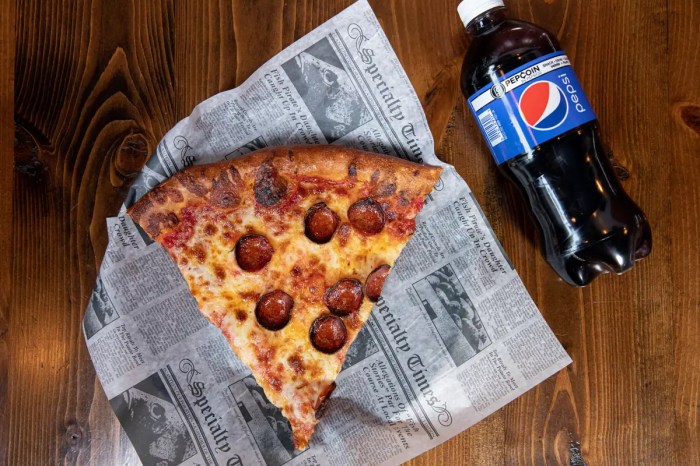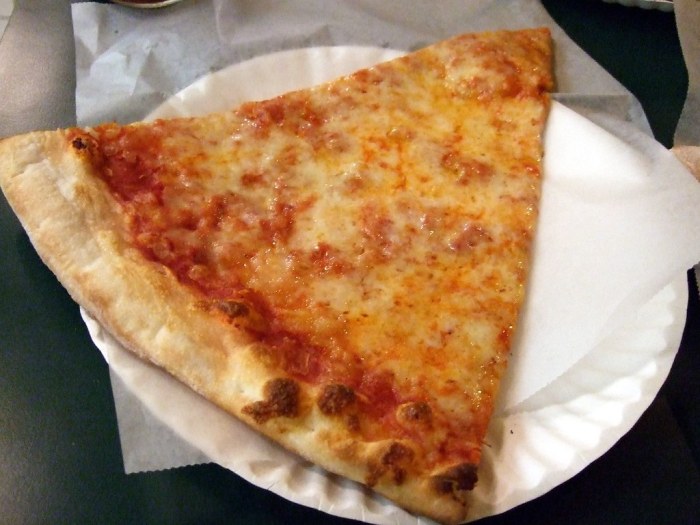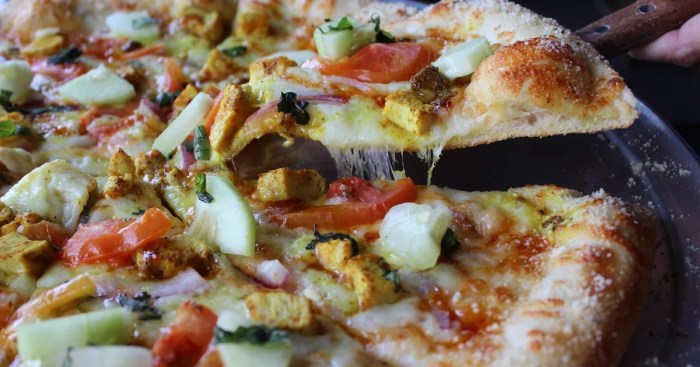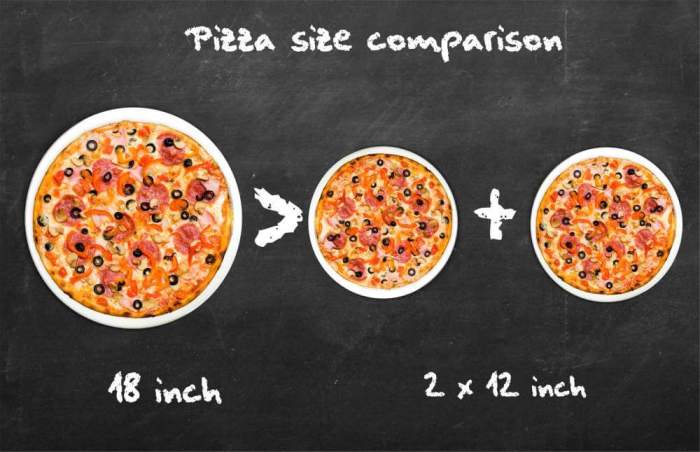A slice of pizza has 500 kcal, making it a tempting yet calorific treat. Delve into the nutritional value, health implications, and cultural significance of this beloved dish.
From its humble origins to its global popularity, pizza has captured hearts and taste buds worldwide. But what lies beneath its cheesy, saucy surface?
Calorie Content of Pizza

Understanding the calorie content of food is crucial for managing weight and maintaining a healthy diet. A single slice of pizza, typically around 1/8 of a large pizza, contains approximately 500 calories.
To put this into perspective, a slice of pizza has a similar calorie count to other common foods, such as:
- A medium-sized apple (130 calories)
- A cup of cooked oatmeal (150 calories)
- Two slices of whole-wheat bread (140 calories)
Consuming too many calories can lead to weight gain, while consuming too few can result in weight loss. Therefore, it is important to be mindful of the calorie content of the foods you eat and to adjust your intake accordingly.
Nutritional Value of Pizza

Pizza, like any other food item, has a nutritional value beyond its calorie count. It is a good source of several essential nutrients, including protein, carbohydrates, fats, vitamins, and minerals. The specific nutrient content of pizza varies depending on the ingredients used, but in general, it provides a good balance of macronutrients.
Macronutrient Breakdown
The macronutrient breakdown of pizza is as follows:
| Macronutrient | Percentage |
|---|---|
| Carbohydrates | 55-65% |
| Protein | 15-20% |
| Fat | 20-25% |
As you can see, pizza is a good source of carbohydrates, which provide energy. It also provides a moderate amount of protein, which is essential for building and repairing tissues. Finally, pizza contains a significant amount of fat, which is necessary for hormone production and cell function.
Comparison to Other Fast Food Options
Compared to other fast food options, pizza is a relatively nutritious choice. It provides a good balance of macronutrients and contains several essential vitamins and minerals. However, it is important to note that the nutritional value of pizza can vary greatly depending on the ingredients used.
For example, a pizza with a whole-wheat crust and plenty of vegetables will be more nutritious than a pizza with a white flour crust and lots of processed meats.
Health Implications of Pizza Consumption

Pizza, a beloved culinary delight, has sparked discussions about its impact on our well-being. Understanding the potential health benefits and risks associated with pizza consumption is crucial for making informed dietary choices.
Did you know that a slice of pizza packs a whopping 500 kcal? That’s a lot of calories to burn off! Speaking of knowledge, check out the wordly wise book 11 lesson 5 for some vocabulary building. Getting back to our slice of pizza, it’s best to enjoy it in moderation or hit the gym after.
Studies have shown that pizza can provide certain nutrients. The tomato sauce is a rich source of lycopene, an antioxidant linked to a reduced risk of chronic diseases like cancer and heart disease. Whole-wheat crust offers fiber, promoting satiety and aiding digestion.
Potential Health Risks
Excessive pizza consumption, however, can pose health concerns. High-fat cheese, processed meats, and refined carbohydrates contribute to a high calorie intake. Regular consumption can lead to weight gain, obesity, and an increased risk of cardiovascular diseases.
The presence of saturated and trans fats in pizza can raise cholesterol levels, potentially leading to heart disease. Excessive sodium intake, common in pizza, can contribute to high blood pressure.
Tips for Healthier Pizza Choices
- Opt for whole-wheat crust over white crust for added fiber.
- Choose lean protein toppings like grilled chicken or vegetables instead of processed meats.
- Limit high-fat cheese and opt for low-fat or non-fat options.
- Request for less salt when ordering pizza.
- Consume pizza in moderation as part of a balanced diet.
By making healthier pizza choices, we can enjoy this delectable dish without compromising our overall health.
Cultural Significance of Pizza: A Slice Of Pizza Has 500 Kcal

Pizza has transcended its culinary roots and evolved into a global phenomenon, deeply embedded in the cultural fabric of numerous countries. Its origins can be traced back to humble beginnings in Naples, Italy, where it was a simple flatbread topped with tomatoes and cheese.
Over centuries, pizza has undergone countless adaptations and variations, mirroring the diverse cultures and tastes of the regions it has touched.
Historical Origins and Evolution
The exact origins of pizza are shrouded in mystery, but its roots can be traced back to ancient civilizations. The Greeks and Romans enjoyed flatbreads topped with herbs and olive oil. In the 10th century, a dish called “pizza” appeared in southern Italy, consisting of a flatbread topped with tomatoes, cheese, and basil.
This dish gained popularity in Naples in the 18th century and became a staple food for the working class.
Global Variations of Pizza, A slice of pizza has 500 kcal
Pizza has become a culinary chameleon, adapting to the tastes and traditions of different cultures. Here’s a glimpse into some of the most notable variations:
| Country | Variations |
|---|---|
| Italy | Neapolitan, Roman, Sicilian, Pugliese |
| United States | New York-style, Chicago deep-dish, California-style |
| Brazil | Pizza paulista, pizza carioca |
| Argentina | Pizza a la piedra, pizza a la parrilla |
| Japan | Okonomiyaki, teppanyaki pizza |
FAQ Summary
Is pizza healthy?
Pizza can be part of a balanced diet in moderation. However, its calorie and fat content should be considered.
How can I make pizza healthier?
Opt for whole-wheat crust, lean protein toppings, and plenty of vegetables.
What is the cultural significance of pizza?
Pizza has become a global symbol of Italian cuisine and a staple in many cultures, often associated with social gatherings and celebrations.

